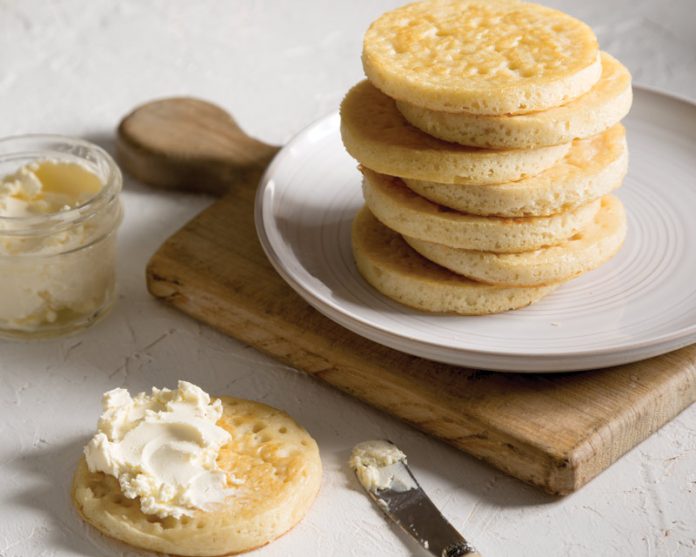
A question that has plagued the breakfast table for years: What is the difference between crumpets and English muffins? Separated by continents and a few ingredients, we break down what exactly sets these two griddle-cooked breads apart. Bake our version of traditional crumpets or get the blueprint and recipe for building the ideal English muffin in our January/February British baking-themed issue, available now!
Traditional Crumpets:
- British
- Unsplit
- Cooked on the griddle
- High-hydration dough, usually calling for a dough of 90- to 100-percent hydration
- Requires muffin rings to cook because the loose batter will need the rings as a barrier, keeping the dough from spreading out on the griddle like a pancake
- Not dusted in cornmeal or semolina flour
- Baking powder is essential to the crumpet dough, creating exaggerated holes in the top of the crumpet as well as a nice perky, rise in the dough

English Muffins:
- American, created by a British expat living in America
- Split
- Cooked on the griddle, occasionally finished in the oven
- Low-hydration dough, usually calling for a dough of 50- to 57-percent hydration
- Does not require muffin rings to cook (although we suggest using them for uniformity)
- Dusted in cornmeal/semolina flour
- Baking powder is not essential, but we like to add it to our recipe for a boost in rise and flavor.
Overlap?
Both have crags, craters, and holes ideal for catching plenty of melted butter!




Are there any corrections to the English Muffin recipe in the Jan/Feb issue?
Hi PatinCal,
Thanks for reaching out! There are no corrections to the English Muffin recipe in the Jan/Feb issue. Happy Baking!
[…] Crumpets vs. English Muffins – Bake from Scratch […]